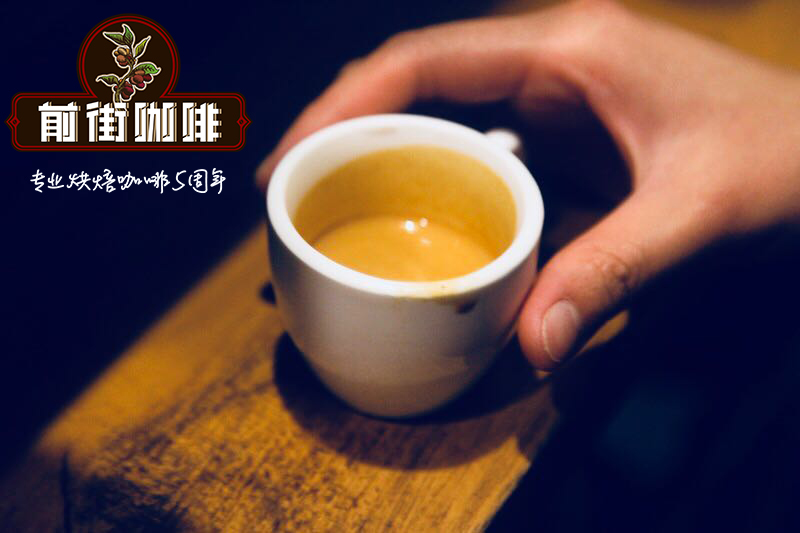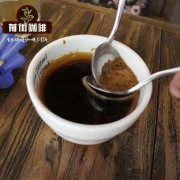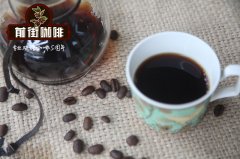Costa Rican honey treats coffee beans characteristics story how to distinguish between yellow, red and black honey coffee
Costa Rican boutique coffee has only come to the fore in the past decade. Although Costa Rica introduced coffee from Cuba as early as 1729 and carried out commercial cultivation, it made great efforts to develop the coffee bean industry. But it mainly produces and distributes mixed coffee beans and Italian commercial beans for export to its nearest neighbor, the United States, which is one of the largest coffee consumers. Because of this, the quality of Costa Rican coffee beans at that time had not yet reached the level of fine coffee. Moreover, due to the poor quality of coffee beans, Costa Rica does not have a national standard (a national standard for regulating the grade of raw coffee beans), because its country is not qualified to evaluate it.
Until later, Costa Rica in order to strengthen the export of high-quality coffee to Europe, the United States, Japan and other countries. Just began to vigorously develop high-quality coffee and increase the added value of coffee exports. At the same time, the government has set up a "coffee trust fund" to help coffee farmers in need tide over their financial difficulties and cultivate high-quality coffee. And in order to make coffee have better quality and characteristics, we used the popular honey treatment method in recent years to change the reputation of poor quality coffee. Therefore, the Costa Rican boutique coffee we are now exposed to is the fine processed honey beans of each of its estates. However, there are still coffee beans treated with ordinary sun water, but the quality and flavor are not so good, so they are not as widely traded as honey-treated beans.
If you want to talk about honey treatment, you can't do without Costa Rican honey treatment of coffee beans.
In the 2003 season, Japanese raw bean buyer Guataro asked Costa Rican honey processing plants to try Brazilian half-sun treatment of Costa Rican traditional washed coffee, in order to increase the alcohol thickness and flavor properties of Costa Rican coffee, weaken the acidity of Costa Rican coffee, and partially replace the imported coffee from Brazil. From then on, honey treatment became popular throughout Central America and went to the world origin: El Salvador (besides sweet, what flavor attribute can you think of), Mexico, Costa Rica, Zawa, Sumatra, Yunnan.
In places such as Costa Rica, Brazil or Colombia, local processing plants used to use high-pressure washing machines, so part of the mucous membrane was removed during the peeling process. According to the amount of mucosal residue (40% Mel 100%), honey treatment is divided into 4 grades: 40%, 60%, 80% and 100%.
[distinguish between yellow, red and black honey treatments of coffee beans treated with Costa Rican honey]
To put it simply, honey treatment is the way to treat the coffee with pectin and endocarp after the peel and flesh are removed. The key to distinguish between different honey treatments lies in the choice of the remaining pectin.
Yellow honey: about 40% of the pectin is removed; the drying method requires the most direct heat absorption, receives the most light drying, and lasts for about 8 days to reach a stable water content.
Red honey: about 25% of the pectin is removed; it takes longer to dry than yellow honey, and reduces direct exposure to sunlight, even in shading sheds, lasting about 12 days.
Black honey: hardly remove pectin; dry for the longest time, lasting at least 2 weeks, with a cover to avoid too strong sunlight, prevent drying too fast, and make sugar conversion more fully.

Important Notice :
前街咖啡 FrontStreet Coffee has moved to new addredd:
FrontStreet Coffee Address: 315,Donghua East Road,GuangZhou
Tel:020 38364473
- Prev

What exactly is a cup test? The role of the cup test? Cup Test Process and Scoring Criteria? Cup test operation method
Professional coffee knowledge exchange More coffee bean information Please pay attention to coffee workshop (Weixin Official Accounts cafe_style) Often think your brewed coffee is not delicious enough? Don't rush to replace coffee beans, and don't spend money on upgrading coffee equipment. Coffee preferences are highly subjective and personal. People often use their favorite coffee as a criterion for judging good coffee, but many
- Next

Coffee industry's new favorite "cold extract coffee"! Why on earth can cold coffee be so popular?!
Professional coffee knowledge exchange more coffee bean information Please follow the coffee workshop (Wechat official account cafe_style) compared with other online celebrity drinks, Lengpai is a classmate with a story: in 1600, Lenglai was accidentally born on a Dutch ship, when there was no hot water on board, the crew made do with cold water to make coffee, but it tasted surprisingly good; soon, Lengfei came from the Netherlands.
Related
- Detailed explanation of Jadeite planting Land in Panamanian Jadeite Manor introduction to the grading system of Jadeite competitive bidding, Red bid, Green bid and Rose Summer
- Story of Coffee planting in Brenka region of Costa Rica Stonehenge Manor anaerobic heavy honey treatment of flavor mouth
- What's on the barrel of Blue Mountain Coffee beans?
- Can American coffee also pull flowers? How to use hot American style to pull out a good-looking pattern?
- Can you make a cold extract with coffee beans? What is the right proportion for cold-extracted coffee formula?
- Indonesian PWN Gold Mandrine Coffee Origin Features Flavor How to Chong? Mandolin coffee is American.
- A brief introduction to the flavor characteristics of Brazilian yellow bourbon coffee beans
- What is the effect of different water quality on the flavor of cold-extracted coffee? What kind of water is best for brewing coffee?
- Why do you think of Rose Summer whenever you mention Panamanian coffee?
- Introduction to the characteristics of authentic blue mountain coffee bean producing areas? What is the CIB Coffee Authority in Jamaica?

